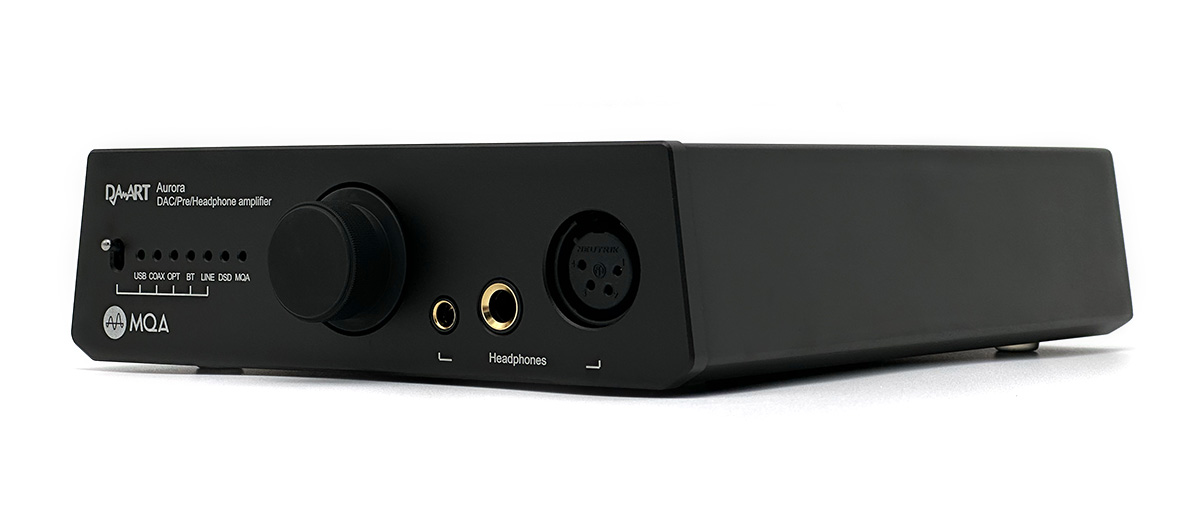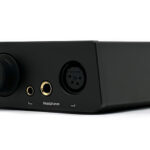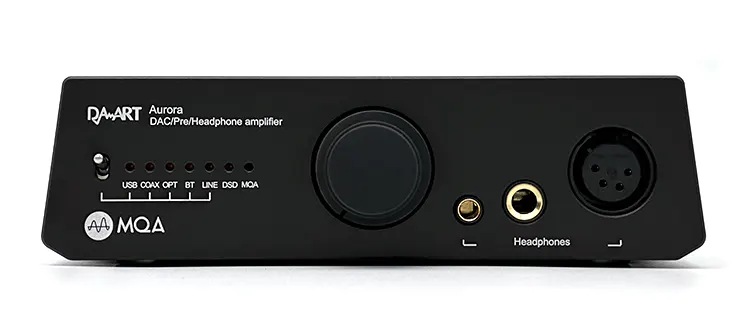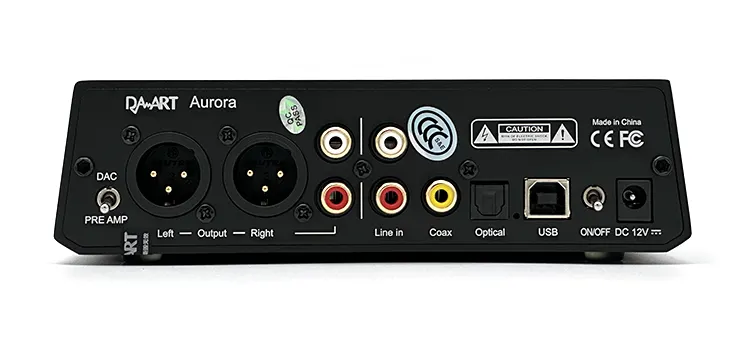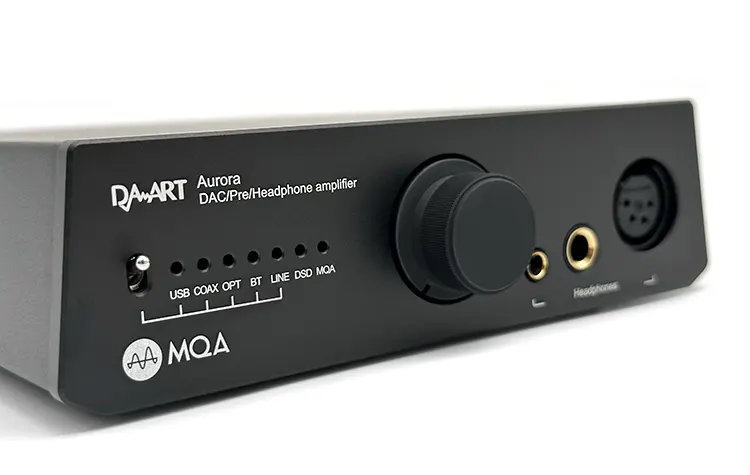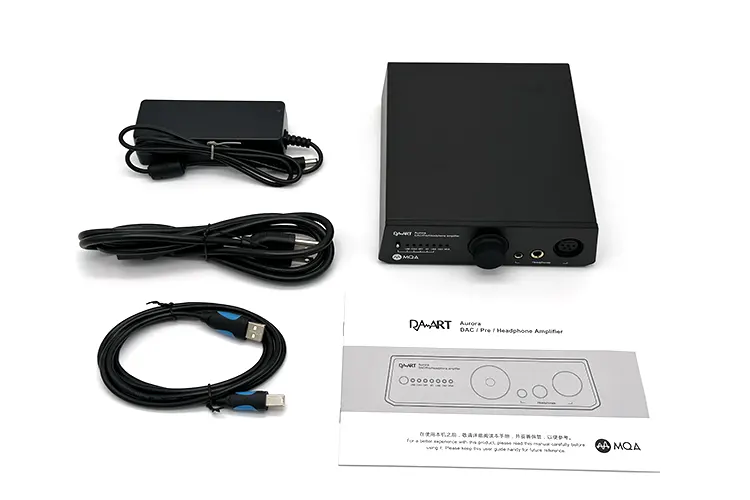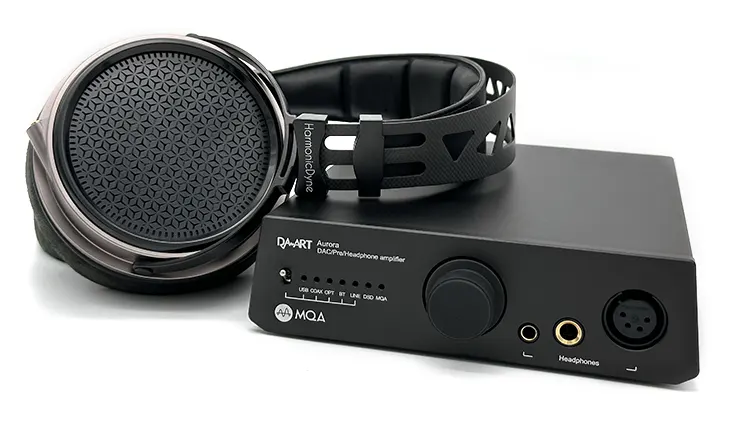We review the YULONG DA-ART Aurora, which is a DSD512 and PCM 32BIT/768kHz desktop decoder and 4W capable headphone amplifier. It is priced at $520.
Disclaimer: This sample was sent to us in exchange for our honest opinion. We thank the team at YULONG and Shenzhen Audio for giving us their support.
Click here to read more about YULONG Audio products we have previously featured on Headfonics.
Note, this review follows our current scoring guidelines which you can read up on in more detail here.
The product profile of YULONG is still quite short and they’re not as fast-paced as some competing manufacturers from China so some of you may find the name unfamiliar. Starting in 2009, the company ideology is simple, design quality all-in-one devices.
We have already reviewed two of their products, the DA10 from the main YULONG brand, and the last is from their sub-brand DA-ART, the Aquila II.
Before the Aurora, the lineup of DA-ART was only comprised of the Aquila II and the Canary II. Filling the massive gap in between, the Aurora has been introduced for those who can’t quite yet afford the Aquila II but want more than what the Canary II provides.
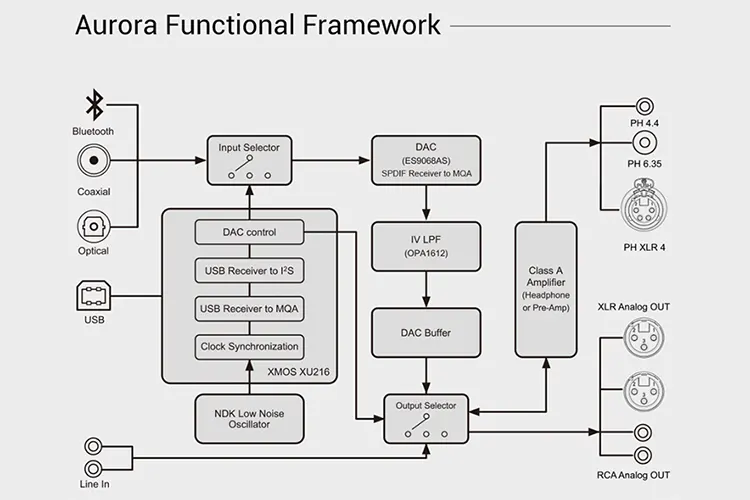
Tech Highlights
The latest Aquila III has reverted to using AKM DAC chips in its system but the Aquila II and the Canary II both went with using ESS-manufactured alternatives.
Seeing that the Aurora has been out for a while, it may take the same direction as the Aquila III for its next-gen but what’s currently inside its gut is a confidence-inspiring ES9068AS.
Controlling the USB input, an older XMOS XU216 takes the responsibility of doing full MQA decoding as well as native DSD512 and 768kHz PCM playback. All the other digital inputs go straight to the DAC for its MQA decoding with more limited compatibility to only DoP128 and 384kHz PCM.
The Aurora may not be a portable product, but mobile users can easily link their phones to listen to their library. This feature is not widely available in the market, and it could be the reason for grabbing the Aurora for some.
After passing the DAC stage, the signal then goes through multiple OPA1612 op-amps for lowpass filtering before reaching the discrete balanced class-A amplifier. Having a Class A amplifier, the unit does get hot after a while but not to the point that it is uncomfortable to touch.
YULONG seems to be tinkering with its amplifier design since I’m finding that the Aurora is their most capable yet. While at face value, the 4W power for 32Ω loads is similar for the Aquila II and even the Aquila III, heavier loads indicate that the Aurora has more drive.
A mechanical carbon film potentiometer is used for the volume wheel and so there is a channel imbalance to be expected. The balance corrects itself above the 8 o’clock position which lessens the degree of freedom for those with efficient gears.
Design
Sharing the design philosophy of the DA-ART Aquila III and Canary II, the Aurora may be targeting an entirely different price range but the lines and angles are pretty much the same.
Like a little brother, the face of the Canary II mirrors closer to the Aurora from its central volume knob, analog switches, and an array of LEDs for some level of feedback. Having a proper digital screen, the Aquila III matures a bit and targets the more premium category.
Aside from a recognizable case DNA, three similar color options are also available across the board. But using a different material than the aluminum chassis, the rubbery volume wheel isn’t exactly in the same shade.
The volume control only needs a nudge to turn as it is a bit lightly weighted. But I like that once you let go, it immediately stops spinning with no play whatsoever.
One of the few things I wish could be improved in the Aurora is the quite short-for-comfort push-down toggle on the front. My unit also doesn’t support Bluetooth functionality but is still entered in the input options.
The other side of the unit isn’t free from peculiarities. The biggest oversight I’d say is the placement of the power switch leaving barely any room for a finger to just slide in between the USB and DC input it is sandwiched in between.
I/O
The Aurora may have a few quirks here and there, but I must admit that the list of IO included more than justifies the price.
If it wasn’t for the manual that said a Bluetooth option was available, I wouldn’t have minded the lack of a wireless interface since I normally don’t reach for Bluetooth in a desk setup.
There are three digital inputs and one analog input in the Aurora. Having the trio of USB, optical, and coaxial inputs these days no longer surprises me. It is the pair of RCA terminals that is more exciting since it can slim down the list of gears to be bought when the Aurora is placed in the middle of the chain.
A balanced input may be absent but the Aurora is not short when it comes to outputs. A pair of full-sized 3-pin XLR sockets fill the rear of the unit, with a 4.4mm and 4-pin XLR decorating the front.
Be careful though with using the Aurora as a preamp, the spec sheet lists the balanced pre-outs with a 12V max output level.
Control
With no standby mode, the Class A amplifier would be drawing power indefinitely unless you completely kill the unit. And seeing that the power switch is at the back, you’ll have to live with always doing the awkward reach which is made even more unfriendly by the tight space left by the two plugs sandwiching it on either side.
The control to choose between fixed and variable output is also kept hidden in the rear. Joining the side where the XLR and the RCA outputs can be found, it is at least more intuitive and easier to access.
YULONG recommends doing the flip only when the volume is set low including for any attached components to prevent a sudden surge.
Audio is always coming out of both the XLR and RCA rear outputs as confirmed with my Adam Audio T5V. I didn’t expect that even if I plug in a headphone, the rear ports are still active. I expected there to be a control to stop the rear from outputting a signal.
In front of the unit, a lone analog switch similar to those found at the back serves as the input picker.
The USB is listed on my computer as ‘YULONG Audio DSD DAC’ which is missing its DA-ART branding. It also doesn’t disappear from the list even if I choose a different input, so I guess the input is always active.
Doing a cycle to the end of the input list, the line input will actuate a relay. Pressing the input switch once again, I heard another relay which probably indicates that the line input is no longer connected.
Packaging & Accessories
I’ll place the box of Aurora in the tall spectrum, not broad since the opening can be found on the slender end orienting the front graphics directly forward. Conveniently listed are all the highlights and performance figures teasingly.
Pulling out a pair of protective foam, the one on the bottom is where the Aurora and its accessories can be found safely tucked. There are two pockets, and one is kept only for the unit itself to prevent any accidental bumps and scratches during shipping.
The list of extras is thin, with only a USB cable, power brick, and power cable to be had. It is noteworthy though for those planning to use the Aurora a bit distant from a wall socket, the total length of the power brick and power cable together can get you quite far.
The last thing I noticed is the manual. For experienced users, while there are some quirks you might want to take note of, you could still toss it without reading, don’t worry.
But I enjoyed reading it since YULONG went to great lengths communicating clearly and in a polite tone the correct and incorrect way of operating their device which will surely remove the hassle from a budding enthusiast.
Synergy
Power
Rated for headphones up to 600W, the Class A headphone amplifier of the Aurora is built for almost any occasion. The last bit where the Aurora would struggle is actually in the opposite spectrum where efficient gears like IEMs are.
Having a channel imbalance doesn’t help. If only YULONG included a low gain that’s below 0dB, the need for aftermarket impedance adaptors to add more flexibility in low volumes could be avoided.
Trying on headsets with at least 300W impedance like the ATH-ADX5000 and the HD600, the Aurora powered the drivers with ease. Whether via single-ended or balanced, it was able to deliver enough juice with the volume staying safely below the noon position.
Attempting to match a planar driver, the HarmonicDyne G200 responded positively to the power pushed by the Aurora. I’m staying in the quarter volume setting for comfortable listening.
Pairings
For an interesting mix of headphones, I paired the Aurora with two dynamic sets from Sennheiser that cannot sound more different from one another and one planar magnetic from HarmonicDyne.
While all three picks I used are open backs, the HD560 S imparted the most breezy and light timbre. Guitars have an aggressiveness to it where the steely twang is injected with deep outlines. The Aurora, however, is putting some pause on the raw nature of the HD560 S on parts where it receives a softer presence.
Placing a little bit less tension to the timbre, the Aurora with the HD600 is still wide but not as free as the HD560 S. Its impressiveness starts with the truthfulness of vocal projection and its underlying minutiae. What is more, its graceful nature adds suppleness to strings removing any shrillness which makes it an enjoyable set.
Even though the Aurora is not sluggish at all, the G200 still sounded slow and weighty. Meant for a relaxing listen, the G200 opposes the Aurora and pulls back on the forwardness of instruments like guitars. The driver’s dark trait however is not helping the Aurora to push clarity, especially in the treble region.
Click on page 2 for sound impressions and our selected comparisons.

